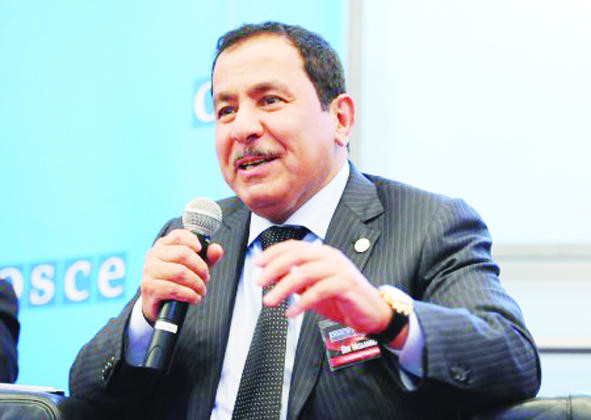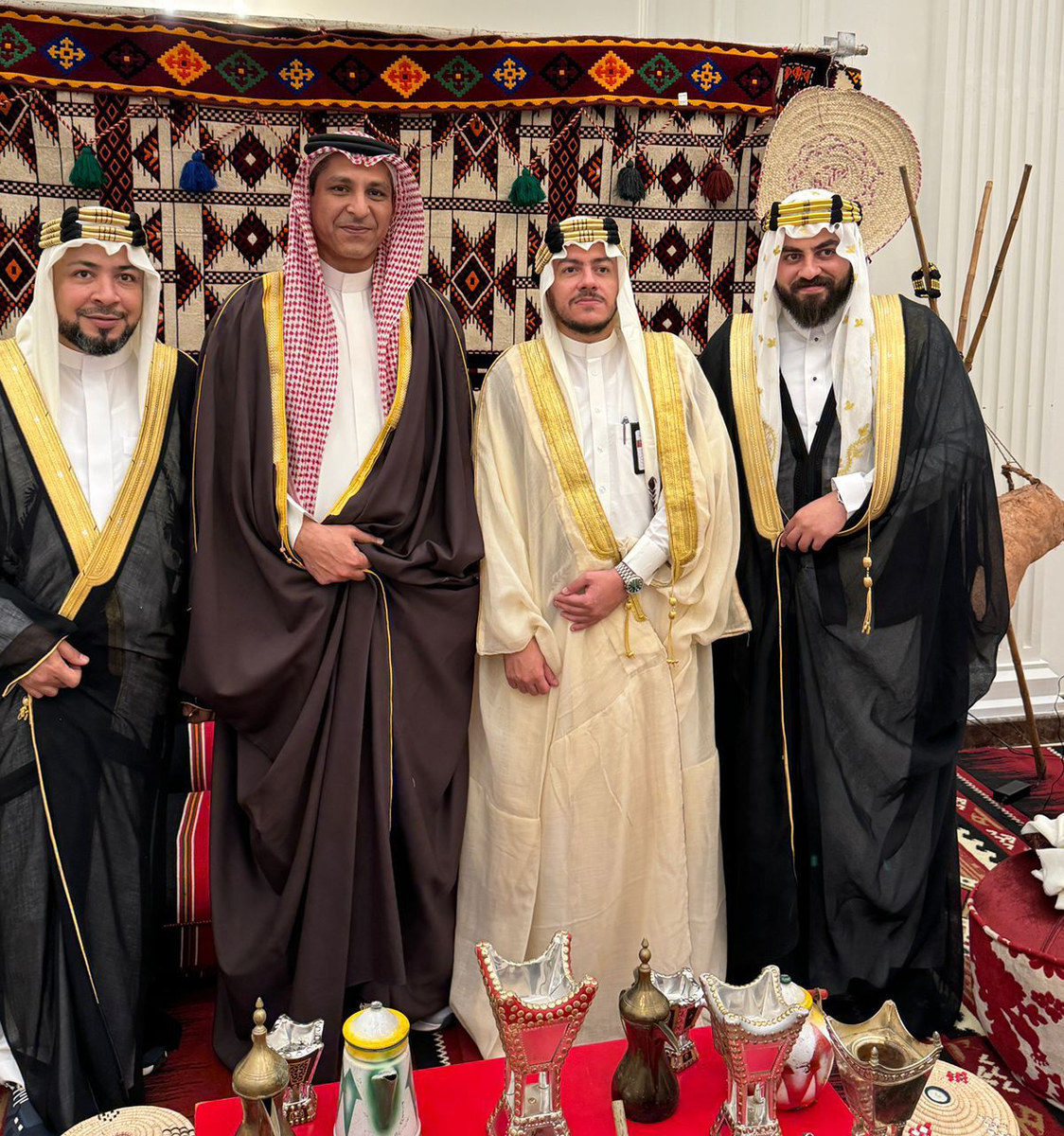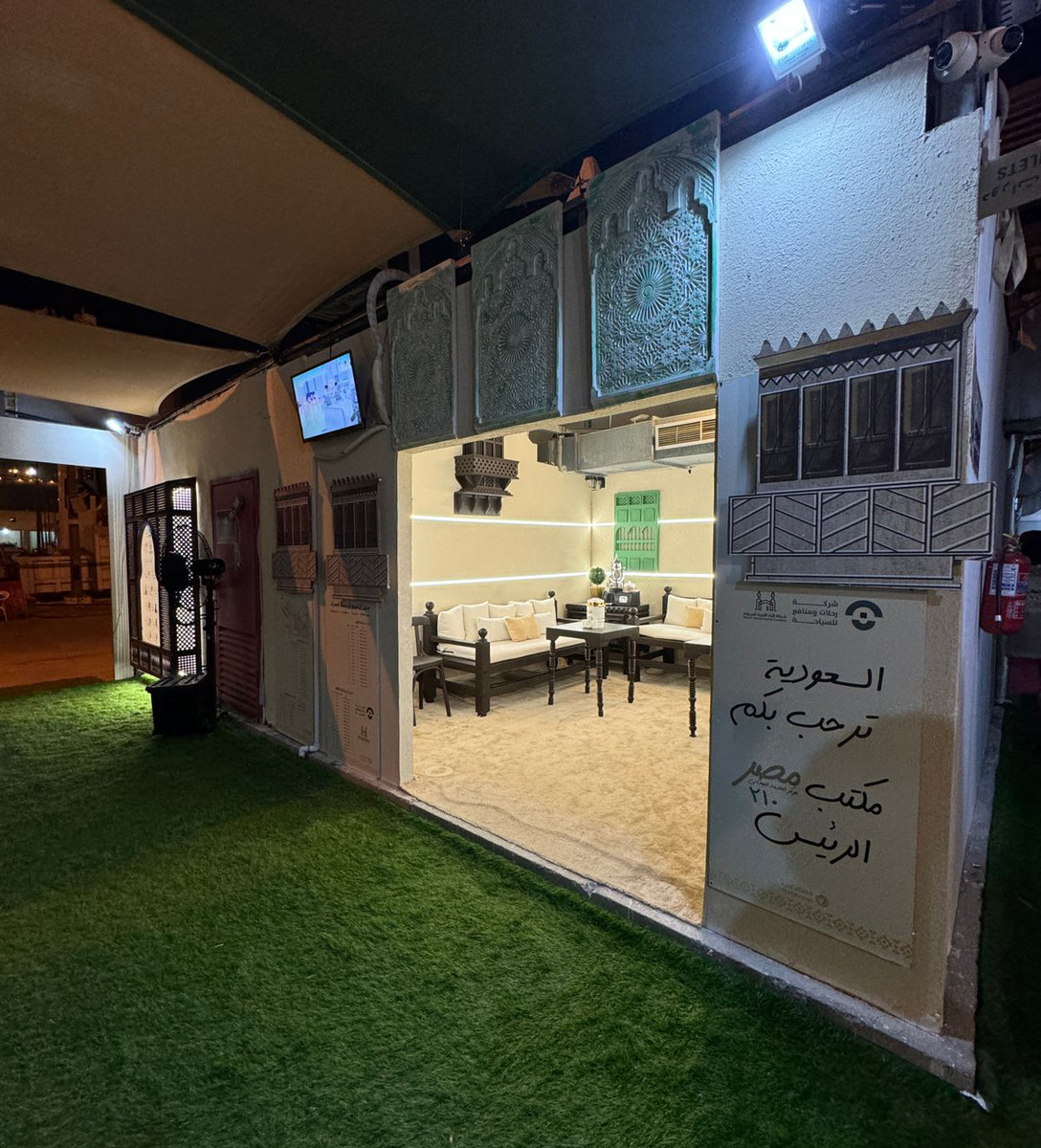NEW YORK: The number of people fleeing their countries, as refugees or migrants, has reached a staggering 65.3 million.
At the 71st Session of the UN General Assembly, interfaith leaders also came to New York to chart a role for the interfaith community to help refugees.
King Abdullah International Center for Inter-Religious and Inter-Cultural Dialogue (KAICIID) organized, together with the United Nations Office on Genocide Prevention, the World Council of Churches and the permanent missions of Italy and Spain, a consultation session under the title: “Bearing Witness: Combating Human Trafficking and Forced Migration.”
During the session, KAICIID announced a new initiative to help refugees in Europe.
KAICIID Secretary-General Faisal bin Muaammar told Arab News that the objective of the new initiative is to assist the Arab refugees in Europe.
“Our mission is to help thousands of refugees during this difficult transition by providing them with skills of dialogue, integration and coexistence because without these skills they will face a serious culture shock,” he said.
He said that European countries welcomed this initiative as their personnel who are helping the refugees are facing many difficulties because they are not familiar with the culture of these refugees.
That is why KAICIID’s initiative will provide cultural training to the Westerners who are dealing the refugees.
As such, KAICIID would be providing invaluable assistance to both refugees and host countries, and will serve as a cultural bridge.
One special focus of the KAICIID initiative is to activate the role of the religious leaders in solving the refugees’ problems especially women and girls. "We will provide training for them to raise their skills in holding a dialogue and their awareness of the events around them,” he said.
KAICIID will train both Muslim and non-Muslim refugees.
“We have to explain to the refugees and the personnel of the host countries that terrorism is against religion and that those who commit terrorist acts do not represent Islam, which calls for peace,” he said.
KAICIID has started training some cadres in Vienna in preparation for sending them to different European countries.
The UN conference is an opportunity to build partnerships with other international interfaith organizations to carry out the initiative.
The conference was attended by 300 interfaith and refugee activists from around the world.
He stressed the role of religious and interfaith leaders in building bridges between the refugees and the communities in the host countries.
KAICIID has been operating for four years now and the most important achievement is obtaining international recognition for highlighting the importance of dialogue between the followers of the different faiths and cultures.
“When we first started, people thought dialogue was not necessary, but as time passed, it became clear that dialogue between the adherents of different culture and faiths is an essential tool in solving regional and international problems. Now we are working on international level to avoid a clash of civilizations,” he said.
“It is clear that we are now living in a global village that is connected as never before because of the social media. Each person now can act as an editor in chief for himself or herself, and it is imperative for every one of us to reach out to the others and promote coexistence because this is the only way to achieve peace in the world,” he said, stressing that one of the biggest challenges before the world community today is to support the refugees.
KAICIID initiative to help Arab refugees integrate in Europe
KAICIID initiative to help Arab refugees integrate in Europe

Hajj pilgrims innovate for comfort amid Saudi Arabia’s efforts to beat the heat

- Portable fans, personal water sprinklers among useful aids in scorching conditions
ARAFAT: Pilgrims have remained inventive in their quest for comfort, despite Saudi Arabia’s diligent efforts to mitigate the sweltering heat at the holy sites.
Alongside the Kingdom’s measures — which include extensive cooling systems — pilgrims are using rechargeable and battery-powered neck and handheld fans in their determination to offset the challenging conditions brought by the summer.

The portable fans provide much-needed relief by offering personal cooling in crowded areas where air circulation may be limited. They allow pilgrims to maintain comfort and focus on their religious duties without being overly affected by the extreme temperatures, thereby enhancing their overall pilgrimage experience.
According to online retail websites, the hands-free fans range from $4 to $8, while neck fans are between $32 to $60. However, some portable waist clip fans may cost from $30 to more than $110.
NUMBER
230k
Managed by the Royal Commission for Makkah City and Holy Sites, the sprinkler system at the holy sites disperses 230,000 cubic meters of water through a pipe network spanning over 190,000 meters.
In accordance with the Health Ministry’s warnings and instructions, many pilgrims are also being observed using small water sprinklers to cool themselves amid the high temperatures.

A report by the National Center for Meteorology noted that temperatures reached 46 C in Arafat on Saturday. In anticipation of such conditions, a massive water sprinkler system had been installed to reduce heat and refresh the air for pilgrims.
Saleh Al-Sufiyani, a Saudi pilgrim from Taif, said that he was aware of the weather conditions in Makkah and purchased a cooling gadget for SR150 (approximately $40).

He added: “The device provides direct airflow to my neck and face, which are sensitive areas for cooling the body. It helps me feel more comfortable as it reduces the sensation of heat.”
Maryam Jadallah, an Egyptian pilgrim, said that she had bought her portable battery-powered fan from Jeddah after learning about the high temperatures in Makkah.

She added: “The fan operates quietly, allowing me to hear everything around me without disturbing my supplications.”
She stressed that cooling the body during hot weather can help prevent heat-related illnesses like heat exhaustion or heatstroke.

She said that despite having her fan with her, she often kept it off as fans and water sprinklers were installed everywhere to help the pilgrims stay cool.
According to Kidana Development Company, a substantial sprinkler system comprising more than 8,000 water posts has been installed at the holy sites to mitigate the high temperatures.

Managed by the Royal Commission for Makkah City and Holy Sites, the system disperses 230,000 cubic meters of water through a pipe network spanning over 190,000 meters. It will operate for 15 hours daily across a span of 13 days.
A recent study published by King Faisal Specialist Hospital and Research Centre revealed that heat-related deaths and strokes during Hajj have fallen by 47.6 and 74.6 percent respectively over a 40-year period because of the interventions by the Kingdom’s government.
Hajj — a profound journey connecting global Muslims

- Pilgrimage unites languages and cultures, building a bridge to the world
MAKKAH: Each Hajj season, Muslims from all over the world, representing diverse languages, cultures and traditions, gather in the holy cities.
Beyond its religious significance, the pilgrimage offers a platform for cultural engagement among worshippers, displaying the rich cultural tapestry of the global Muslim community.
The cultural diversity is evident not only in the pilgrims’ traditional attire, but also in the variety of languages that can be heard throughout Makkah’s neighborhoods, in the Grand Mosque and the roads leading to it, as well as on public transportation.

Fawaz Al-Dahas, a history professor at Umm Al-Qura University, emphasized the understanding and solidarity of Muslims who gather for one purpose: to perform Hajj.
Despite their different languages and cultural backgrounds, pilgrims strive for understanding, harmony and kindness with each other to ensure their pilgrimage is accepted and their efforts are not in vain, he said.
“The cultural exchange during Hajj is a unique and enriching opportunity. Pilgrims learn about the customs and traditions of other countries, opening new horizons and deepening knowledge,” Al-Dahas said, adding that this leads to greater respect and deeper understanding among people from different backgrounds.

“Hajj promotes the concept of one nation, where all pilgrims are equal, regardless of race or nationality,” Al-Dahas said.
“Wearing the ihram, all pilgrims feel a sense of equality and belonging to a single community, fostering peaceful coexistence. This experience teaches patience, tolerance and cooperation during the performance of the rituals, further strengthening the spirit of understanding and coexistence among Muslims after they return home.”
Hajj also promotes collaboration among Islamic nations in areas such as health, security, and logistics, as governments work together to ensure pilgrims’ safety and comfort, he added. This cooperation promotes brotherly relations and solidarity.

Through this annual event, Muslims bridge cultural and geographical divides. Hajj highlights the value of interaction between peoples and nations, demonstrating how diversity can be a strength in society.
Rania Shawdary, a mutawif (guide for the pilgrims), said: “Hajj is a significant annual event that reflects the Kingdom’s substantial efforts in serving pilgrims from around the world. Pilgrims witness firsthand the extensive services and facilities provided, which encourages them to cooperate and participate and observe everyone working together for the success of this great ritual for Muslims.”
She highlighted the generosity and hospitality, with pilgrims from different parts of the world receiving free services, such as water, food and housing.

Pilgrims learn the importance of social solidarity through sharing food and mutual assistance in performing the rituals, thereby enhancing the spirit of solidarity and brotherhood, Shawdary said.
“The shared challenges and difficulties faced during their journey prompt pilgrims to assist each other and cooperate, helping them put aside their differences.”
Majid Al-Mufadhli, a Saudi journalist who has covered Hajj events for years, said that media plays a significant role in conveying the Hajj experience to the world.
“This helps promote understanding and communication between different cultures, as media coverage of Hajj events and pilgrim stories and experiences raises awareness of Hajj’s importance and its role in uniting Muslims,” he said.
Social media platforms also enhance communication among pilgrims, their families and friends, as well as between worshippers themselves, facilitating the exchange of experiences and cultures and promoting understanding, Al-Mufadhli added.
“Pilgrims face significant challenges related to crowd management, joint work and adhering to plans set by the responsible authorities, which drives them to cooperate and harmonize with each other to perform the rituals with comfort and ease,” he said.
The pilgrimage also represents an opportunity for innovation in areas such as crowd management, health and transportation technology, utilizing modern technologies to ensure safety and comfort. The atmosphere of cooperation shows the world that Muslims are an organized and compassionate community, capable of adapting to ensure the safety and comfort of all.
“Hajj is an opportunity and an extraordinary gathering that unites languages and cultures. Through participating in this great event, pilgrims learn the values of generosity, hospitality, love and brotherhood, returning home with a new spirit of unity and cooperation,” Al-Mufadhli said.
Saudi Arabia’s advanced measures ensured a successful season for pilgrims, says chairman of the Hajj Security Committee

- Address to military sectors emphasizes commitment to high-quality services
RIYADH: Saudi Arabia’s precise execution of security measures has been pivotal to the success of this year’s Hajj season, according to Lt. Gen. Mohammad bin Abdullah Al-Bassami, director of Public Security and chairman of the Hajj Security Committee.
In an address to the military sectors involved in the Hajj season on Sunday, Al-Bassami emphasized the directives from the Kingdom’s leadership and the commitment to delivering high-quality services to the pilgrims as key elements of the success.
He highlighted the Kingdom’s concerted efforts in utilizing all available human and mechanical resources alongside modern technological advancements. This had streamlined Hajj operations, enhancing the services provided to pilgrims, saving time and effort and improving overall service quality.
Al-Bassami noted that Public Security had effectively implemented artificial intelligence for crowd management at the holy sites. The technology had been instrumental in ensuring the safety and security of pilgrims, supported by modern equipment and the dissemination of awareness messages.
Crown Prince Mohammed bin Salman received well-wishers on the occasion of Eid Al-Adha at Mina Palace on Sunday where he also praised the various organizations involved in the success of Hajj.
Saudi brand showcases heritage to pilgrims

- Initiative to help ‘foster cultural understanding and appreciation’
JEDDAH: Almugasap, a Saudi fashion label, has launched a traditional costume experience in the Arafat and Mina areas, giving pilgrims the chance to wear authentic Saudi attire from all regions of the Kingdom.
The initiative, which includes instant photo printing, was installed prior to the start of the pilgrimage to showcase Saudi heritage to international guests.
Pilgrims could choose from a diverse collection of traditional costumes for both men and women, designed under the supervision of renowned Saudi designers Arief Alsherif and Sari Salem Hariry.

“By showcasing the beauty of Saudi traditional clothing, we hope to foster cultural understanding and appreciation,” said Salem Hariry.
Through the intricate craftsmanship of traditional clothing, Almugasap is creating a vibrant mosaic of Saudi heritage that celebrates the rich cultural tapestry of the Kingdom and also serves as a bridge to connect individuals from diverse backgrounds.
HIGHLIGHTS
• Almugasap is creating a vibrant mosaic of Saudi heritage that celebrates the rich cultural tapestry of the Kingdom.
• The designers are exploring new silhouettes, experimenting with vibrant color palettes, and prioritizing sustainable fabrics and production methods.
“Each thread and design element in our traditional costumes tells a story of the past, present, and future, inviting pilgrims and visitors alike to immerse themselves in the beauty and essence of Saudi culture,” Alsherif said.

“By offering this unique experience, we hope to ignite a sense of curiosity and appreciation for the traditions that define us, fostering a deeper understanding and respect for the cultural identity that unites us all.”
The designers bridge the gap between tradition and modernity by exploring new silhouettes, experimenting with vibrant color palettes, and prioritizing sustainable fabrics and production methods.
Almugasap also partnered with Mashariq, the Southeast Asian pilgrims company, to hold a ceremony to celebrate the arrival of groups from 16 countries. The event was attended by diplomatic figures, officials from Hajj offices in the participating countries, and specialists in Hajj and Umrah affairs.
“Wearing a traditional Saudi thobe with the shemagh and other accessories was a powerful way to experience a new culture,” said Mansour Ali from Malaysia. “It felt like stepping into a symbol of unity and respect for the people of this land.”
Saudi medical team performs brain surgery on Turkish pilgrim

- 70-year-old Turkish female Hajj pilgrim suffered a hemorrhage
RIYADH: A Saudi medical team from the neurosciences center at King Abdullah Medical City performed a complex brain operation on a 70-year-old Turkish female Hajj pilgrim who had suffered a hemorrhage, the Saudi Press Agency reported on Sunday.
The team acted quickly to relieve pressure on the woman’s brain, drilling a hole in the skull and inserting a drainage tube.
X-rays identified an arteriovenous malformation in a critical area of the brain, which was treated using advanced medical techniques. There were no complications.
When the patient regained consciousness she was able to be taken off the respirator.
Her health is gradually improving, and plans are being made to allow her to complete Hajj with full medical supervision.

















